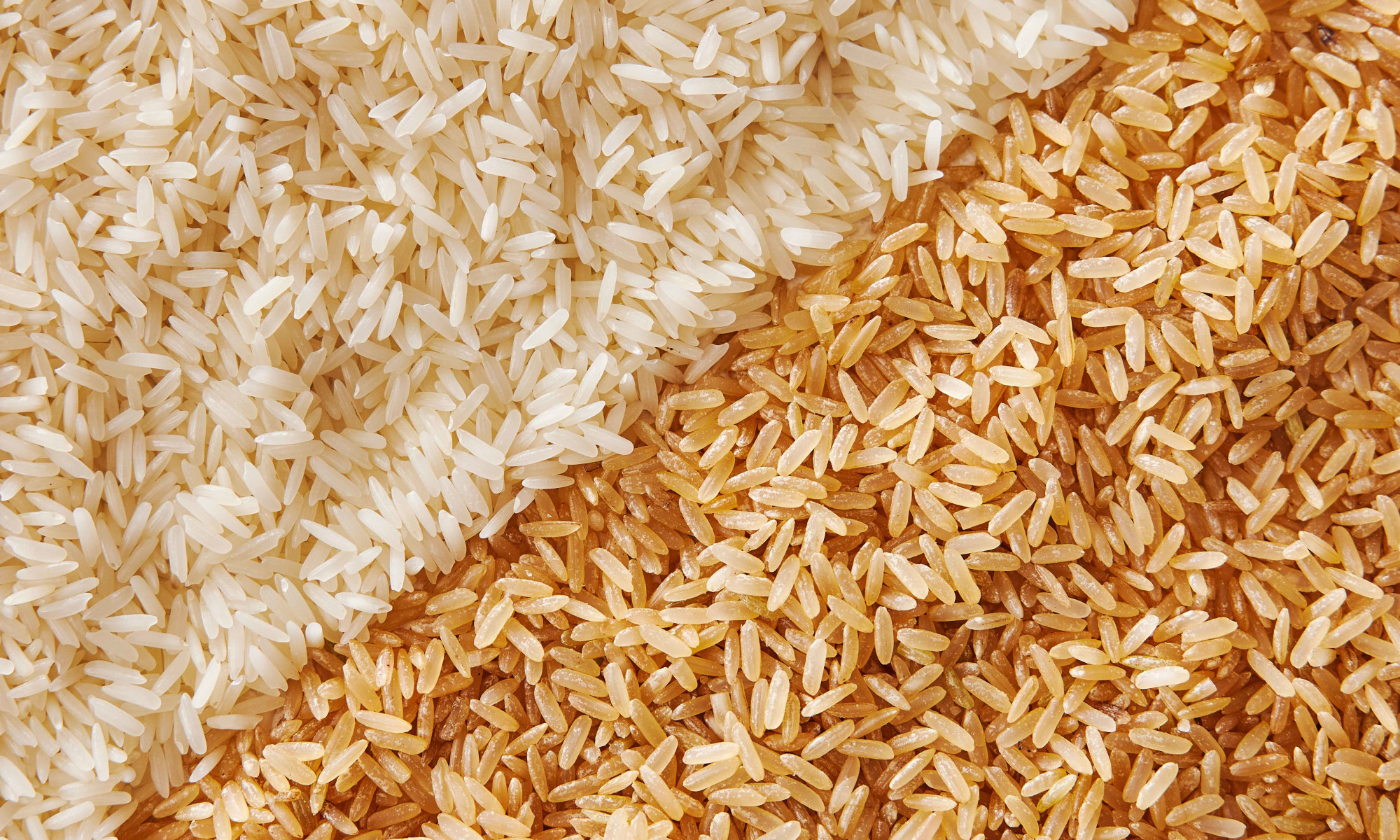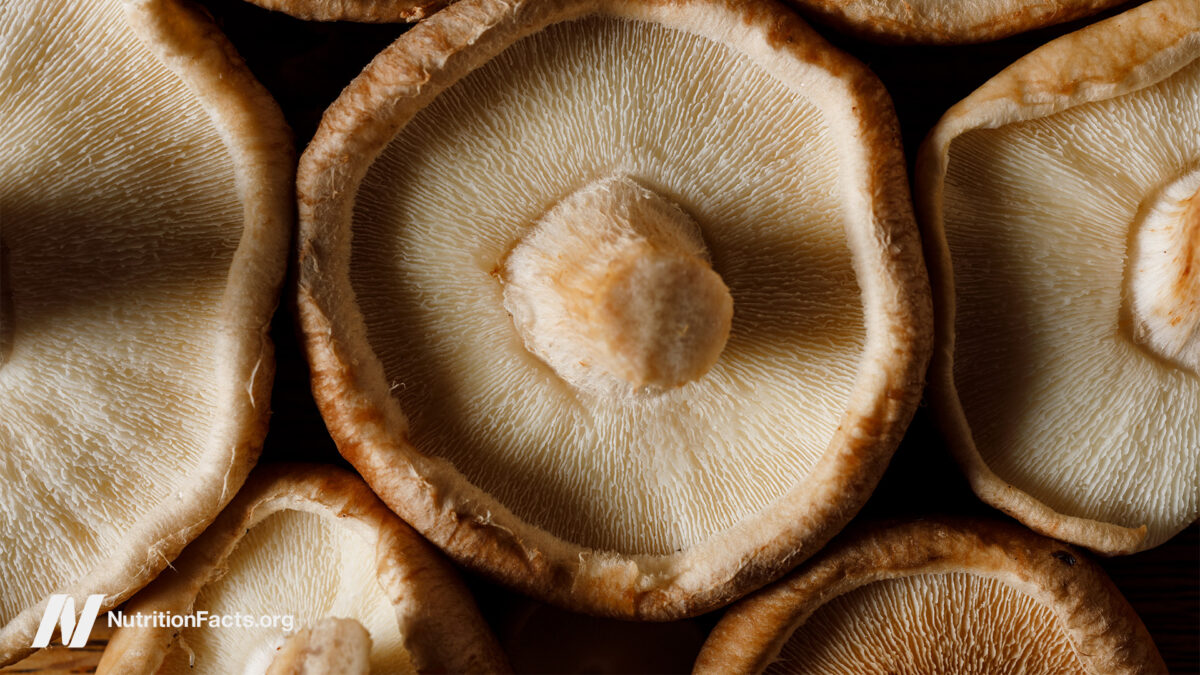Give It To Me Straight — Is Brown Rice That Much Better Than White?
This vs. that, rice edition.


Beauty & Health Editor
Beauty & Health Editor
Hannah Frye is the Beauty & Health Editor at mindbodygreen. She has a B.S. in journalism and a minor in women’s, gender, and queer studies from California Polytechnic State University, San Luis Obispo. Hannah has written across lifestyle sections including beauty, women’s health, mental health, sustainability, social media trends, and more. She previously worked for Almost 30, a top-rated health and wellness podcast. In her current role, Hannah reports on the latest beauty trends and innovations, women’s health research, brain health news, and plenty more.
Image by Joe St. Pierre / Stocksy June 04, 2025 We carefully vet all products and services featured on mindbodygreen using our Our selections are never influenced by the commissions earned from our links. Every day, we navigate a maze of nutritional decisions—oat milk or regular milk? White bread or whole grain? Chicken or fish? Tofu or tempeh? Amid this array of choices, there's rarely a clear-cut right or wrong. Instead, we're faced with a plethora of nutrients to weigh and nuanced recommendations to fit our individual health goals. Today, we delve into one of the most prevalent "this vs. that" quandaries in nutrition: Brown rice vs. white rice—which reigns supreme?
The need-to-knows
The differences between brown and white rice
Let's begin by getting to know our different grains a little better. First up, we have brown rice—a minimally processed whole grain best known for its high fiber content1. "Brown rice is considered a whole grain because it retains all parts of the grain kernel (the bran, germ, and endosperm)," explains nutritionist and founder of Real Nutrition Amy Shapiro, R.D., CDN.
On the other hand, we have white rice, which is not considered a whole grain. "The bran of brown rice, a whole grain, is removed to make white rice, a refined grain," says Traditional Chinese Medicine (TCM) chef and dietitian Zoey Gong, R.D.
While brown rice is the more nutrient-dense option, it's consumed much less often compared to its refined counterpart. A study conducted in Nepal revealed that the majority of participants harbored aversions to brown rice2, citing several reasons, such as:
If this scenario feels familiar, you're in the right spot. Here, we're providing an expert-backed crash course on the benefits of brown rice, its nutritional comparison to white rice, recent research findings on this whole grain, and identifying who should pay extra attention to their rice choices.
The health benefits of brown rice
Below, a few reasons brown rice tends to be a healthier choice:
1.
Brown rice is better for your gut microbiome
As mentioned above, brown rice contains the outer bran layer3 and germ, both of which are rich in fiber, vitamins, minerals, and phytonutrients, says microbiome researcher, microbiologist, and Ayurvedic clinician Christine Tara Peterson, Ph.D.
In the white rice vs. brown rice debate (isolating it from other dietary considerations), opting for white rice could potentially result in a less diverse gut microbiome. This, in turn, may lead to diminished fermentation in the colon, a factor linked to increased gas and worsening symptoms of irritable bowel syndrome (IBS)5 among individuals grappling with gut health issues.
Summary
The outer bran layer and germ in brown rice contain prebiotics, fiber, and other nutrients that contribute to a healthier gut microbiome and subsequently healthy fermentation in the colon–the latter, an important point for those with IBS.
2.
Brown rice is better for blood sugar balance
If there's anyone who should be extra picky when it comes to choosing brown rice over white rice, it's those with diabetes or general blood sugar concerns.
"Brown rice is generally recommended for people with diabetes due to its lower glycemic index6 and higher fiber content, which help regulate blood sugar levels and promote satiety," Peterson says.
Some research suggests that swapping white rice for brown could even reduce the risk of type 2 diabetes by 16%7, and replacing white rice with whole grains in general could lower the risk by 35%.
However, a research review including participants with prediabetes and type 2 diabetes found no significant effect on glycemic index control8 when swapping white rice for brown rice. Still, in that same review, researchers found that choosing brown rice reduces body weight and increases beneficial HDL-cholesterol levels in those with diabetes, so there were still worthwhile benefits for the group.
Additionally, it's worth noting that brown rice has been shown to lower cholesterol9, which may help to reduce the already increased risk of cardiovascular disease for those with diabetes, Shapiro notes.
Summary
Because brown rice has a lower glycemic index and higher fiber content than white rice, it's generally a better option for those with diabetes or prediabetes.
3.
Brown rice is better for weight management and metabolism
For those focused on weight management and boosting metabolism, brown rice seems to come out on top. Research shows that brown rice consumption significantly helped study participants lose weight10 (as measured by both pounds and waist circumference), when compared to white rice consumption.
Several factors come into play here, with one significant aspect being the variance in fiber content, notes Shapiro. Fiber-rich foods significantly enhance the sensation of satiety after a meal, a critical element for managing weight and promoting weight loss, she emphasizes.
Summary
Brown rice may support weight management and metabolic health, thanks to its rich fiber content, ability to support blood sugar balance, and its anti-inflammatory fatty acid profile.
So, is white rice bad for you?
It's pretty clear that brown rice is more nutrient-dense and thus, generally regarded as the healthier option. Nevertheless, this doesn't mean white rice is unhealthy, either.
"I don't think anyone should avoid white rice and view it as plague," Gong says.
She continues, "It's important to know that in many East Asian cultures, people eat white rice every day as their main carbohydrate in a balanced, healthy diet," which emphasizes the importance of what foods you pair with your rice.
Knowing that white rice comes with fewer nutrients (fiber included), you may consider pairing your white rice with fiber and nutrient-dense foods to compensate—think beans, broccoli, artichoke, Brussels sprouts, lentils, etc.
You can also cook your white rice in bone broth for added protein, or mix in spices like ginger and turmeric to elevate the antioxidant content and flavor.
Why TCM praises white rice
"TCM praises a moderate amount of white rice as an ingredient that can 'warm the center' (meaning, strengthening our digestive system and easing discomfort) and benefit people who are very 'deficient' (meaning, weak, sick, prone to diarrhea)," Gong says.
Arguments against brown rice
Like many foods out there, brown rice does have some downsides—mainly when consumed at high volumes or on a daily basis. Most notably, brown rice contains trace amounts of arsenic, which is held in the outer layer, hence why white rice has significantly lower concentrations.
Another potential drawback of consuming brown rice is that its high fiber content can pose challenges for individuals with highly sensitive digestive systems or those currently dealing with gut imbalances. While brown rice is generally beneficial for gut health, it might not be the optimal choice for individuals currently experiencing digestive discomfort or difficulties digesting food.
Other grains to consider
Now, if you want to make the swap toward a more nutrient-dense grain but brown rice isn't cutting it flavor-wise, don't worry—there are plenty more options to consider. Below, a few of Shapiro's best recommendations:
You can also begin to mix brown rice into your white rice to help your flavor palate adjust to the new grain, should you feel inspired to make the switch.
No matter what you choose, be it brown rice or white rice, remember to look at what else is on your plate and aim for balance all around.
FAQ
Is brown rice healthier than white rice?
Brown rice contains more fiber and nutrients than white rice, making it the healthier option for most people, especially those with blood sugar, weight, or gut health concerns.
What is the healthiest rice to eat?
Brown rice is typically considered the healthiest rice option; however, black rice and red rice are also rich in fiber, antioxidants, and other good-for-you nutrients.
Is brown rice OK for diabetics?
Brown rice is generally better for diabetics than white rice. Still, it's a good idea to limit brown rice consumption to ½ a cup daily.
The takeaway
When comparing brown and white rice, the former takes the cake for nutrient density. The additional fiber and prebiotics contribute to the grain's benefits for gut health, blood sugar, and metabolic health.
This doesn't mean white rice is bad for you, but rather brown rice packs a stronger nutrient punch. If you're seeking more fiber on your plate but aren't ready to make the switch, consider sprinkling these fiber-rich foods into your daily menu.

 JimMin
JimMin 



















![The 2026 AI Search Benchmark Every SEO Leader Needs [Webinar] via @sejournal, @lorenbaker](https://www.searchenginejournal.com/wp-content/uploads/2025/11/1-259.png)





.jpg&h=630&w=1200&q=100&v=ebcc31501f&c=1)




